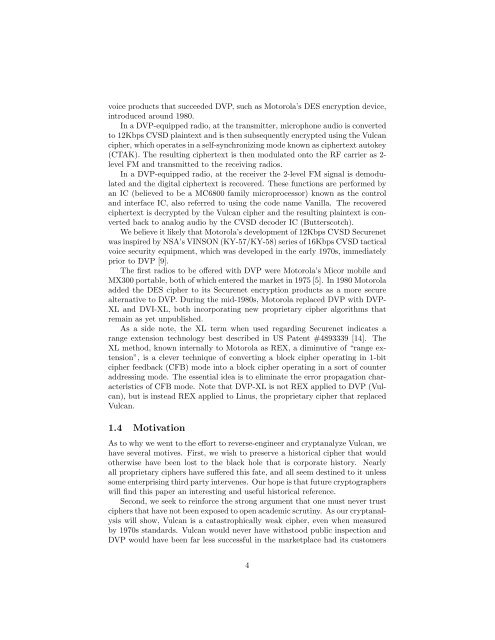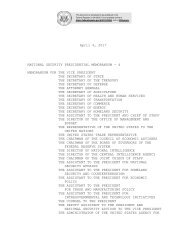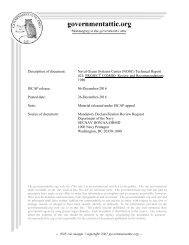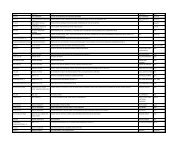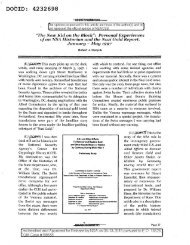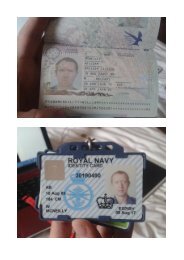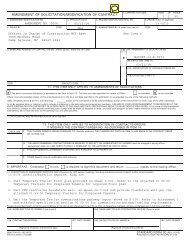vulcan-cryptanalysis
vulcan-cryptanalysis
vulcan-cryptanalysis
Create successful ePaper yourself
Turn your PDF publications into a flip-book with our unique Google optimized e-Paper software.
voice products that succeeded DVP, such as Motorola’s DES encryption device,<br />
introduced around 1980.<br />
In a DVP-equipped radio, at the transmitter, microphone audio is converted<br />
to 12Kbps CVSD plaintext and is then subsequently encrypted using the Vulcan<br />
cipher, which operates in a self-synchronizing mode known as ciphertext autokey<br />
(CTAK). The resulting ciphertext is then modulated onto the RF carrier as 2-<br />
level FM and transmitted to the receiving radios.<br />
In a DVP-equipped radio, at the receiver the 2-level FM signal is demodulated<br />
and the digital ciphertext is recovered. These functions are performed by<br />
an IC (believed to be a MC6800 family microprocessor) known as the control<br />
and interface IC, also referred to using the code name Vanilla. The recovered<br />
ciphertext is decrypted by the Vulcan cipher and the resulting plaintext is converted<br />
back to analog audio by the CVSD decoder IC (Butterscotch).<br />
We believe it likely that Motorola’s development of 12Kbps CVSD Securenet<br />
was inspired by NSA’s VINSON (KY-57/KY-58) series of 16Kbps CVSD tactical<br />
voice security equipment, which was developed in the early 1970s, immediately<br />
prior to DVP [9].<br />
The first radios to be offered with DVP were Motorola’s Micor mobile and<br />
MX300 portable, both of which entered the market in 1975 [5]. In 1980 Motorola<br />
added the DES cipher to its Securenet encryption products as a more secure<br />
alternative to DVP. During the mid-1980s, Motorola replaced DVP with DVP-<br />
XL and DVI-XL, both incorporating new proprietary cipher algorithms that<br />
remain as yet unpublished.<br />
As a side note, the XL term when used regarding Securenet indicates a<br />
range extension technology best described in US Patent #4893339 [14]. The<br />
XL method, known internally to Motorola as REX, a diminutive of “range extension”,<br />
is a clever technique of converting a block cipher operating in 1-bit<br />
cipher feedback (CFB) mode into a block cipher operating in a sort of counter<br />
addressing mode. The essential idea is to eliminate the error propagation characteristics<br />
of CFB mode. Note that DVP-XL is not REX applied to DVP (Vulcan),<br />
but is instead REX applied to Linus, the proprietary cipher that replaced<br />
Vulcan.<br />
1.4 Motivation<br />
As to why we went to the effort to reverse-engineer and cryptanalyze Vulcan, we<br />
have several motives. First, we wish to preserve a historical cipher that would<br />
otherwise have been lost to the black hole that is corporate history. Nearly<br />
all proprietary ciphers have suffered this fate, and all seem destined to it unless<br />
some enterprising third party intervenes. Our hope is that future cryptographers<br />
will find this paper an interesting and useful historical reference.<br />
Second, we seek to reinforce the strong argument that one must never trust<br />
ciphers that have not been exposed to open academic scrutiny. As our <strong>cryptanalysis</strong><br />
will show, Vulcan is a catastrophically weak cipher, even when measured<br />
by 1970s standards. Vulcan would never have withstood public inspection and<br />
DVP would have been far less successful in the marketplace had its customers<br />
4


